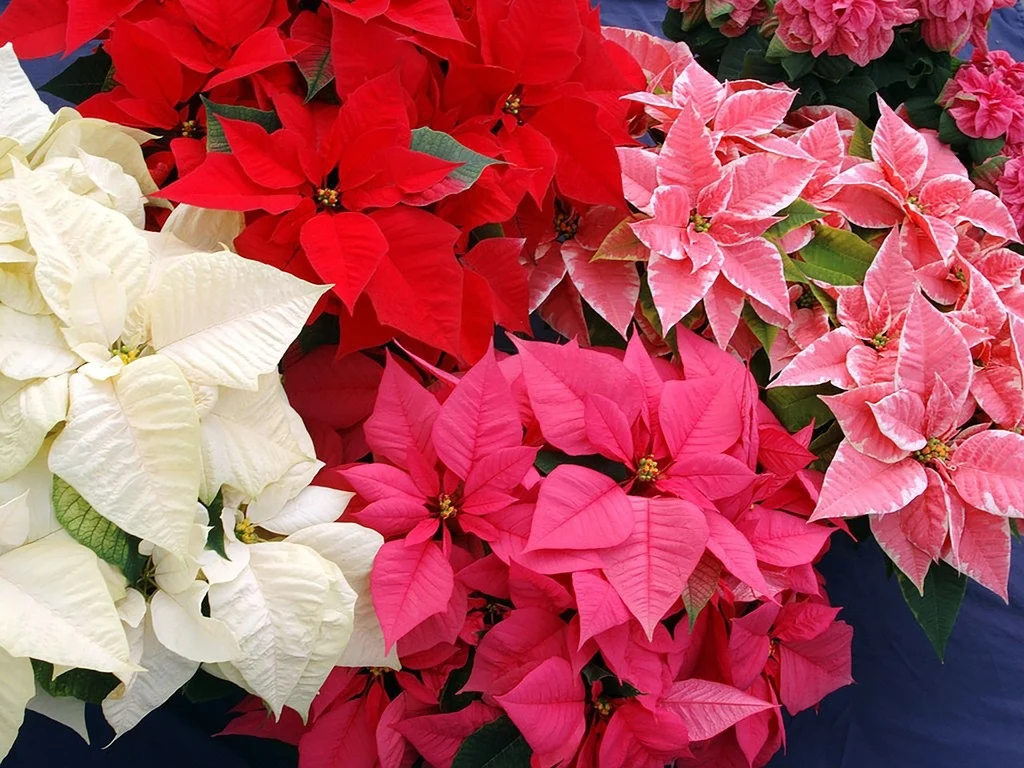“Christmas waves a magic wand over this world, and behold, everything is softer and more beautiful.” – Norman Vincent Peale.
Christmas is an annual festival commemorating the birth of Jesus Christ, observed on December 25 as a religious and cultural celebration among billions of people worldwide.
It is a significant event in the Christian calendar and is marked by various customs, traditions, and festive activities. Families attend special church services, exchange Christmas gifts to symbolize generosity and the spirit of giving, and decorate their homes with festive ornaments, lights, and Christmas trees. The joyous occasion is marked by feasting on special meals, participating in acts of charity, and counting down the days with Advent calendars.
Among these, the most exciting thing for children and young people during holidays is often receiving gifts from Santa Claus. This Christmas, let us embrace the idea of giving plants as Christmas gifts. Instead of traditional presents, consider the beauty and meaning that plants can bring to the holiday season.
Plants not only add a touch of nature to the celebrations but also serve as lasting reminders of the joyous holiday season. The idea of nurturing a living plant can instill a sense of responsibility and create lasting memories, making it a meaningful and eco-friendly present for the festive occasion. Giving plants as Christmas gifts is a wonderful idea. Here are some popular and festive options:
Poinsettia (Euphorbia pulcherrima)
Poinsettias are classic Christmas plants known for their vibrant red and green foliage. They add a festive touch to any home during the holiday season.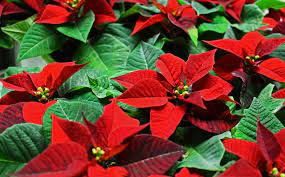
Care Requirements
- Light: Poinsettias prefer bright, indirect light. Place them near a sunny window where they can receive sunlight for at least six hours daily. Avoid direct sunlight, as it may cause the leaves to fade.
- Temperature: Poinsettias thrive in temperatures between 65-75°F (18-24°C) during the day and slightly cooler at night. Prevent exposing them to drafts or abrupt temperature fluctuations.
- Humidity: Maintain consistent soil moisture, avoiding waterlogging. Water the plant when the upper inch of soil is dry to the touch, and make sure the pot has drainage holes to prevent water from accumulating. Poinsettias prefer higher humidity levels. You can place a tray of water near the plant or use a humidifier, especially if your indoor air is dry.
- Soil: Well-draining soil is crucial for poinsettias. A combination of potting soil with either perlite or sand is effective. Make sure the container allows excess water to drain away.
- Fertilization: Feed poinsettias with a balanced, all-purpose fertilizer every 2-4 weeks during the growing season (spring and summer). Cut back or discontinue fertilization during late fall and winter.
- Pruning: To encourage a bushy shape, pinch back the tips of new growth in late spring or early summer. Avoid pruning after September 1st, as this could interfere with the plant’s ability to set buds for the holiday season.
Rosemary Tree (Rosmarinus officinalis)
Shaped like a small Christmas tree, a potted rosemary plant not only adds a festive touch but is also useful in the kitchen. It can be used as a fragrant herb in holiday cooking.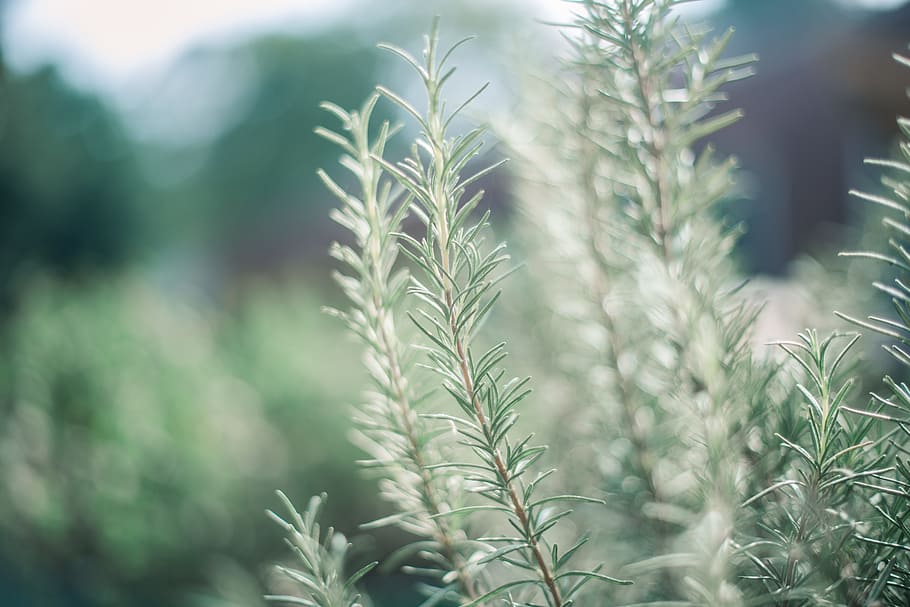
Care Requirements
- Light: Rosemary prefers full sunlight. Place your rosemary tree in a location where it receives at least 6-8 hours of direct sunlight per day. A sunny windowsill or a well-lit spot indoors is ideal.
- Temperature: Rosemary thrives in a warm environment. Maintain the plant in an environment where temperatures range from 60 to 75°F (15 to 24°C). Prevent exposure to chilly drafts or drastic temperature changes.
- Watering: Allow the soil to dry out slightly between waterings. Water when the top inch of the soil feels dry to the touch. Ensure that the pot has drainage holes to prevent soggy roots, as rosemary doesn’t like overly wet conditions.
- Soil: Rosemary prefers well-draining soil with a slightly acidic to neutral pH. Use a potting mix designed for herbs or a mix of potting soil, sand, and perlite.
- Humidity: Rosemary is adapted to low humidity conditions, but it can benefit from an occasional misting with water, especially in dry indoor environments.
- Pruning: Regular pruning helps maintain the shape of the rosemary tree and encourages bushier growth. You can use the pruned leaves for culinary purposes.
- Fertilization: Feed your rosemary tree with a balanced, water-soluble fertilizer every 4-6 weeks during the growing season (spring and summer). Reduce or stop fertilizing in fall and winter when the plant is less active.
- Pests and Diseases: Rosemary is generally resistant to pests, but you should still keep an eye out for issues like spider mites or powdery mildew. Maintain good air circulation and address any pest problems promptly.
Amaryllis(Hippeastrum)
Amaryllis bulbs can be gifted, and their large, showy blooms make a stunning display, especially during the Christmas season. They come in various colors, including red and white, adding elegance to the holiday decor.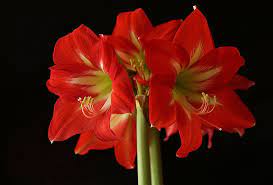
Care Requirements
- Planting: Plant the amaryllis bulb in well-draining soil, leaving about one-third of the bulb above the soil surface. Use a pot with drainage holes to prevent soggy conditions.
- Light: Amaryllis prefers bright, indirect light. Place the pot in a sunny window where it can receive at least 6 hours of sunlight daily. Rotate the pot occasionally to ensure even growth.
- Watering: Water the amaryllis sparingly at first, allowing the soil to dry out slightly between waterings. Once the flower stalk emerges, increase the frequency of watering. Prevent overwatering, as an excess of moisture can result in bulb rot.
- Temperature: Amaryllis prefers temperatures between 60-75°F (15-24°C). Keep it in a warm location and protect it from drafts.
- Fertilization: Use a balanced, water-soluble fertilizer every 2-4 weeks during the growing season (spring and summer). Once the flowers bloom, you can reduce the frequency of fertilizing.
- Staking: As the flower stalk grows, you may need to stake it to provide support. Use a bamboo stake or any other sturdy support to prevent the stalk from bending or breaking.
- Deadheading: Remove spent flowers promptly to encourage the plant’s energy to go into bulb development. Cut the flower stalk near the base once all blooms have faded.
- Dormancy: After flowering, the amaryllis may enter a period of dormancy. Reduce watering and stop fertilizing. You can allow the leaves to wither naturally, and resume regular care when the new growth appears.
- Pests and Diseases: Keep an eye out for pests like aphids or mealybugs. Treat any infestations promptly with insecticidal soap. Amaryllis is generally resistant to diseases but can be susceptible to bulb rot in overly damp conditions.
Succulent Arrangements
Create or purchase a festive arrangement of succulents in holiday-themed containers. Succulents are low-maintenance and come in various colors and shapes which will be a good idea for Christmas gifts. 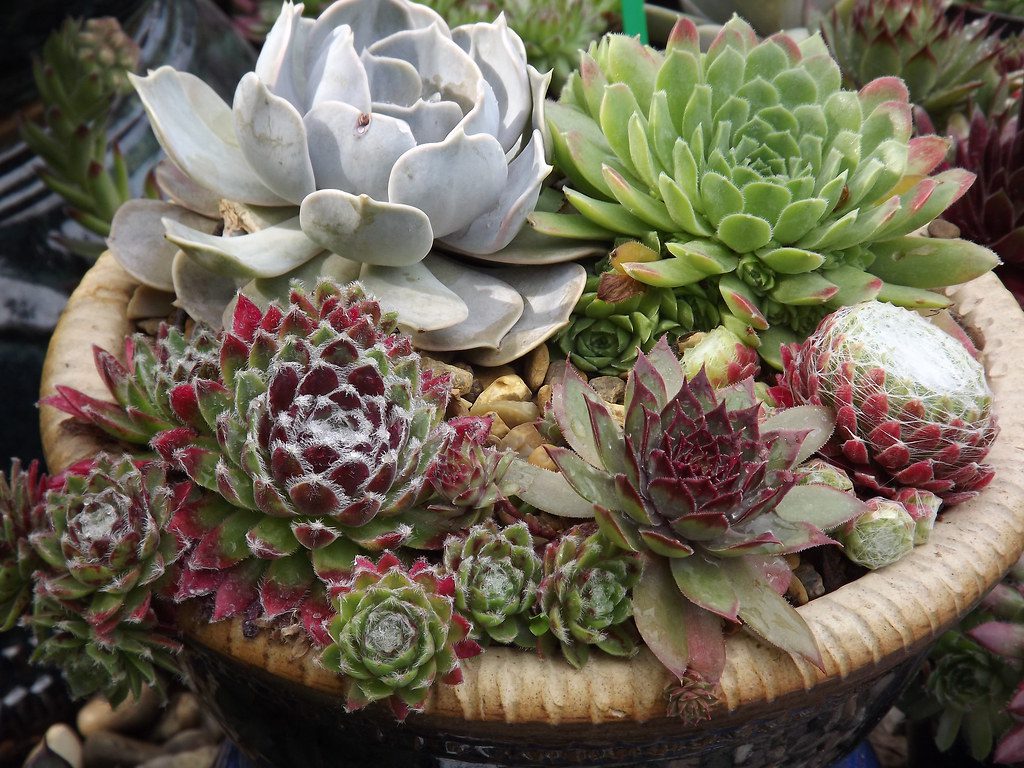
Care Requirements
- Light: Succulents thrive in bright, indirect sunlight. Place the arrangement in a location where it receives several hours of sunlight each day. Indoor succulents can also do well near a sunny window.
- Watering: Succulents are drought-tolerant and prefer infrequent, deep watering.
- Soil: Utilize a potting mix designed for cacti or succulents with good drainage. You can enhance drainage by adding perlite or coarse sand to the soil.
- Temperature: Succulents prefer moderate temperatures between 60-75°F (15-24°C). Protect them from extreme heat or cold, and avoid sudden temperature fluctuations.
- Fertilization: Feed the succulents with a diluted, balanced fertilizer during the growing season (spring and summer) every 4-6 weeks. Reduce or eliminate fertilization during fall and winter when the plants are less active.
- Container Choice: Choose containers with drainage holes to prevent waterlogging. Ensure that the containers are suitable for the size of the succulent arrangement and complement the festive theme.
- Pruning: Trim leggy or overgrown succulents to maintain the arrangement’s shape. You can propagate cuttings to create new plants.
- Pest Control: Keep an eye out for pests like aphids or mealybugs. Treat any infestations promptly with insecticidal soap.
- Indoor vs. Outdoor Placement: Succulent arrangements can be kept indoors or outdoors, depending on the climate. In colder climates, bring outdoor arrangements indoors during frosty weather.
- Rotating: Rotate the arrangement regularly to ensure that all sides receive adequate sunlight, promoting even growth.
Orchids
Orchids are elegant and come in a variety of colors. A potted orchid can make a sophisticated and long-lasting Christmas gift. 
Care Requirements
- Light: Orchids thrive in bright, indirect light. Place them near a window with filtered sunlight or an area with dappled light. Prevent them from being exposed to direct sunlight, as it may result in scorched leaves.
- Temperature: Orchids prefer temperatures between 60-80°F (15-27°C) during the day and a slightly cooler range at night. Protect them from drafts and sudden temperature changes.
- Watering: Water orchids sparingly. Let the potting mix nearly dry before the next watering. Use a well-draining orchid mix and ensure that the pot has drainage holes to prevent waterlogged roots.
- Humidity: Orchids benefit from higher humidity levels. You can increase humidity by placing a tray of water near the orchid or using a humidifier, especially in dry indoor environments.
- Potting Mix: Use a specialized orchid mix that provides good aeration and drainage. Orchids are often epiphytic, meaning they grow on other surfaces, so a mix of bark, sphagnum moss, and perlite is suitable.
- Fertilization: Feed orchids with a balanced, water-soluble orchid fertilizer at half strength every 2-4 weeks during the growing season (spring and summer). Reduce frequency during fall and winter.
- Container Choice: Orchids are often sold in containers with drainage holes. Choose a decorative pot with good drainage or keep the orchid in its plastic container, placing it inside a decorative outer pot.
- Pruning: Trim dead or yellowing leaves or spent flower spikes. Orchids do not require extensive pruning.
- Repotting: Repot orchids when the potting mix breaks down or when the plant outgrows its container. Repotting is typically done every 1-2 years.
- Pest Control: Keep an eye out for pests such as spider mites or scale. Treat any infestations promptly with insecticidal soap.
Final thoughts
As the holiday season approaches, the gift of plants adds a special touch to the festivities. Whether it’s the classic charm of poinsettias, the fragrant practicality of rosemary trees, the stunning blooms of amaryllis, the low-maintenance beauty of succulent arrangements, or the sophisticated elegance of orchids, each plant carries unique qualities that make it a thoughtful and enduring Christmas gift.
These living presents not only contribute to the festive decor but also bring nature indoors, creating a connection between the gift giver and the recipient. With the right care, these plants can thrive beyond the holiday season, becoming lasting reminders of joy, beauty, and the spirit of giving. Consider the individual preferences and care requirements of each plant, and let the gift of greenery enhance the warmth of the Christmas celebrations.
Do Read: Meditation, Elephant facts, Positive Parenting
FAQs
Q. Are plants suitable for all types of recipients?
A. Yes, plants are versatile gifts suitable for various recipients, including friends, family, colleagues, and even those with different levels of gardening experience.
Q. How do I ensure the plant is well-received and cared for?
A. Include care instructions with the plant and choose a variety that matches the recipient’s lifestyle and preferences. Consider their ability to care for the plant, available sunlight, and indoor space.
Q. Can plants be sent as Christmas gifts through online services?
A. Yes, many online retailers offer a variety of plants suitable for gifting, and they can be delivered directly to the recipient’s doorstep.
Q. How do I choose the right Christmas plant for a specific person?
A. Consider the recipient’s preferences, living space, and level of gardening experience. Choose a plant that aligns with their lifestyle and the care they can provide.
Q. Are there eco-friendly benefits to giving plants as Christmas gifts?
A. Yes, giving plants as a Christmas gift promotes environmental sustainability. Plants contribute to air purification, reduce carbon dioxide levels, and add greenery to indoor spaces.
Q. Can I include a personalized touch with a plant gift?
A. Absolutely! Consider decorative pots, personalized plant markers, or a festive ribbon to add a personal and decorative touch to the plant gift.
